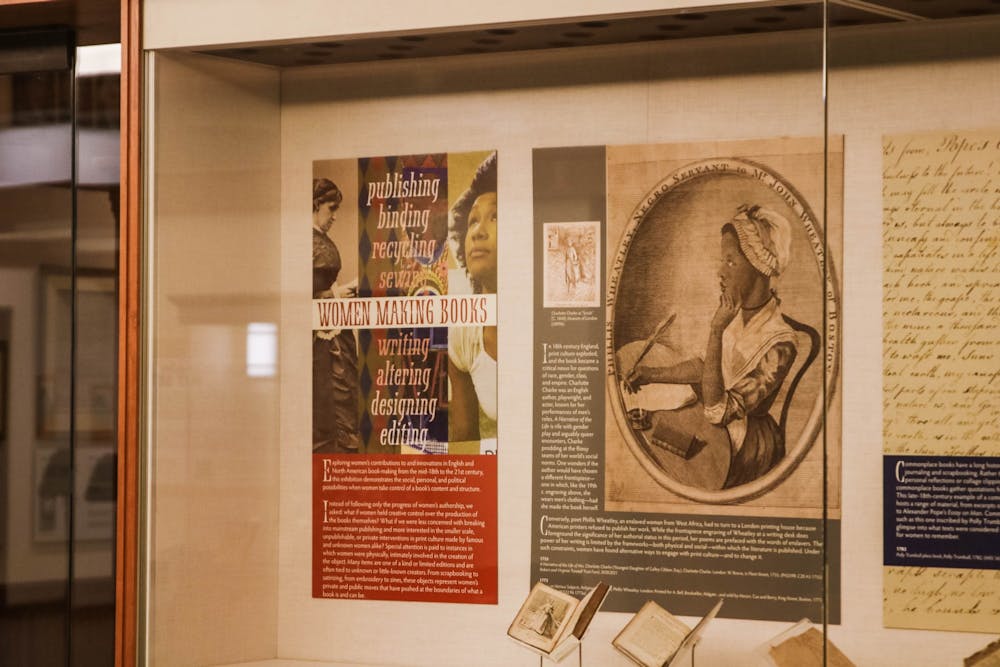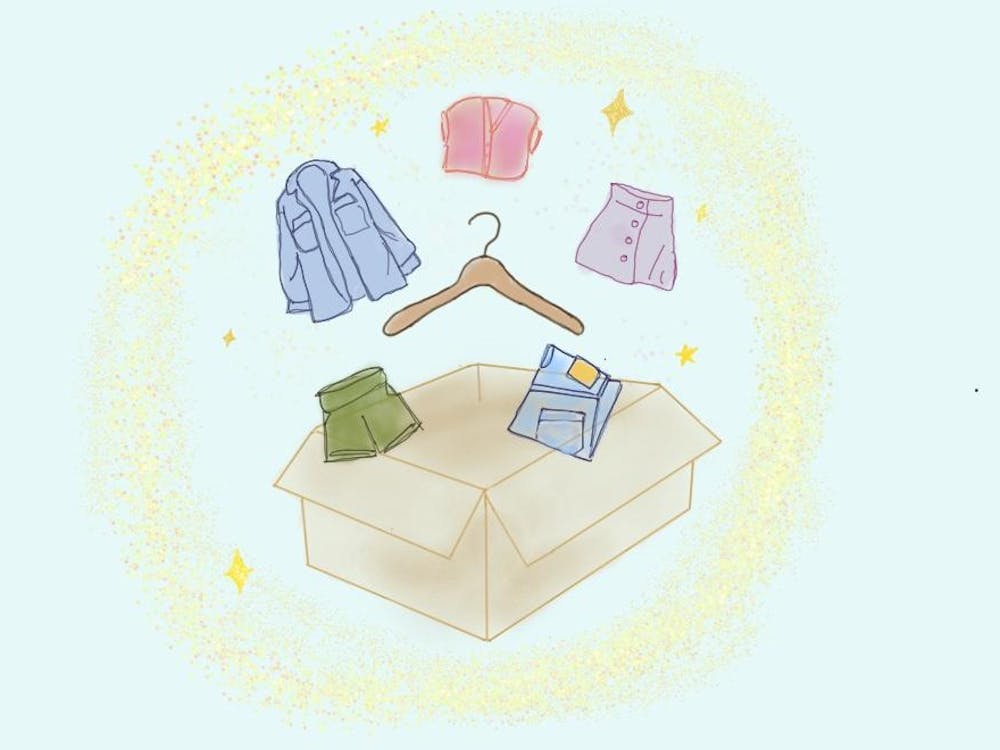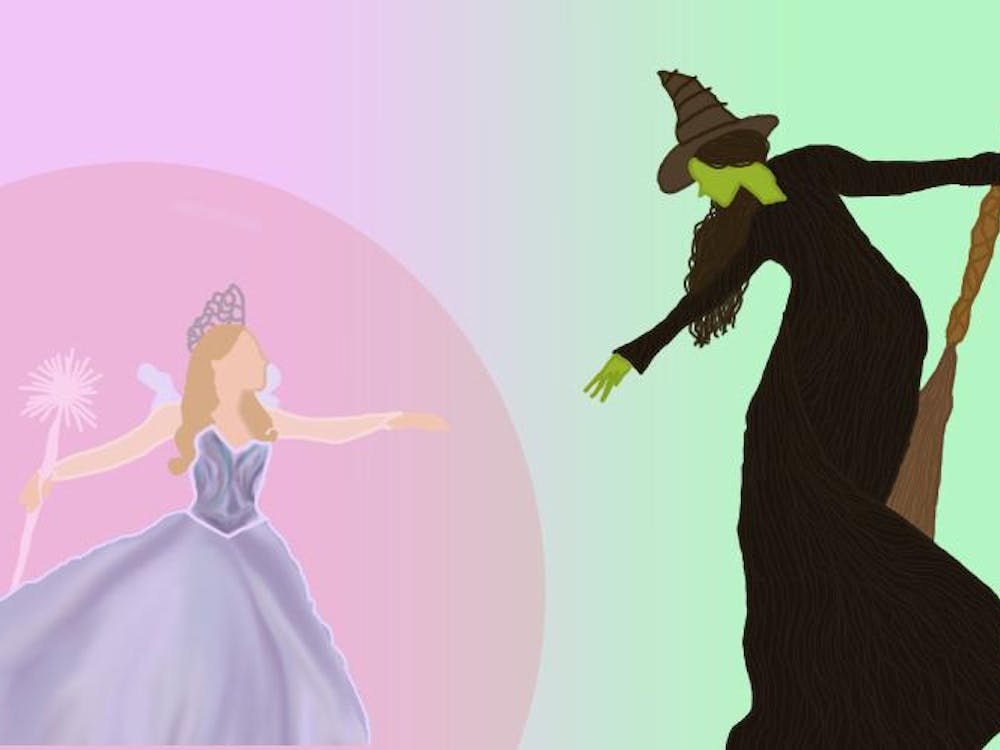Two glass cases of women’s scrapbooks, zines and mementos line the walls of the First Floor Gallery in the University’s Albert and Shirley Small Special Collections Library. The exhibition, “Women Making Books,” showcases stories ranging from the 18th century to the 21st century that assert bookmaking as a source of female agency in the historically male-dominated world of literature.
The exhibit opened to accompany the 2023 British Women Writers Association Conference that will be held May 25 through May 27 at the University.
Andrew Stauffer, English professor and one of the conference faculty advisors, initiated the “Women Making Books” exhibition, seeking to curate an exhibition encapsulating the conference’s themes and “show off” the University’s special collections.
After Stauffer reached out to a curator of University Library Exhibitions, Holly Robertson, and Annyston Pennington, a doctoral student at the Graduate School of Arts and Sciences, the exhibition was born.
“We’re hoping people during breaks will stop by and think about … how women wrote and what it means to write and what it means to make a book in different ways,” Stauffer said.
This year, the BWWA Conference theme is Liberties, so Pennington framed “Women Making Books” accordingly, choosing a diverse array of handmade items through which women freely express their stories.
The exhibit displays pieces by both renowned female writers — like Virginia Woolf, who printed her acclaimed novels herself — and ordinary women who kept scrapbooks and annotated their favorite poems. Pennington said that featuring the latter “disrupts” the widely held notion that “to be a capital-W Woman writer” is to be a prominent published author.
The exhibition explores the concept of femininity by featuring needlework and hairwork throughout history, revealing the compelling stories behind art forms often overlooked.
“Common Threads: Volume 128” is a fabric sculpture in the shape of a composition book on which the artist, Candace Hicks, embroiders her musings on the political significance behind word choices. Pennington described domestic activity such as needlework as one of the few areas in which women could “establish modes of power.” The curators included Hicks’s piece as an employment of historically feminine activity to assert female empowerment.
Across the hall in another glass case lies an array of Victorian hairwork. 19th century women would gift one another locks of hair, braided into jewelry that they can wear or store in scrapbooks. The women labeled the adornments with the names of their loved ones, as seen in the work, demonstrating a memorial and sentimental function.
As Victorian hairwork represents the everlasting bonds of female camaraderie, another piece titled “HAIR 머리카락” uses hair to bind poetry into a small booklet and to symbolize the simultaneous “obsession and contempt” with the female body. This modern piece utilizes two languages — Korean and English — to cement the universality of feminine struggles, a sentiment that unites women across cultures.
“Women Making Books” also explores the human desire for connection, whether reaching for personal connections with one another or towards the greater world.
Pennington, who is non-binary, recalled the awe they experience when they see commonplace books in special collections, describing them as collaging others’ words and images “in conversation with each other” to communicate an entirely new idea.
“Presumably, these women were not only making these objects for themselves, but also to share them and to show their friends or create them collaboratively,” Pennington said. “People have always wanted to do this sort of thing, and it’s definitely worth celebrating.”
“She Feels Your Absence Deeply” is another piece that exhibits the strive for connection, especially across great physical distances. Class of 1998 alumna Golnar Adili creates images with children’s toy blocks to narrate the story of her parents’ immigration from Iran to the U.S.
On the blocks, Adili quotes one of her mother’s letters to her father who traveled to the United States by first describing the family’s agonizing longing for their father, emphasizing how the yearning for connection with loved ones is a desire that exceeds the cultural bounds of time and place.
“Women Making Books” takes care to feature a diverse set of voices, committing to inclusivity and highlighting marginalized individuals. Pennington hopes to challenge the notion of a gender binary through the exhibit, which includes several works by authors whose genders are unknown due to the authors’ own anonymity or the authors’ varied expressions of gender.
“What does it actually mean that women are doing this stuff?” Pennington said. “What it means to be a woman changes culturally over time along all these different axes, so how can this even be a discrete category that we use to narrow the field?”
Thus, Pennington said they deliberately selected voices pushed to the side by the “masculine perspective,” which often deems activities like needlework and “un-domestic labor” feminine.
By recontextualizing these stereotypes, which serve as “a site wherein women have had to work within a box in order to establish modes of power,” Pennington hopes to pave the way for writers using a variety of media to transcend the ordinary definition of books as they do gender.
The “Women Making Books” exhibit will be on display through June 10 in the Albert and Shirley Small Special Collections Library.







